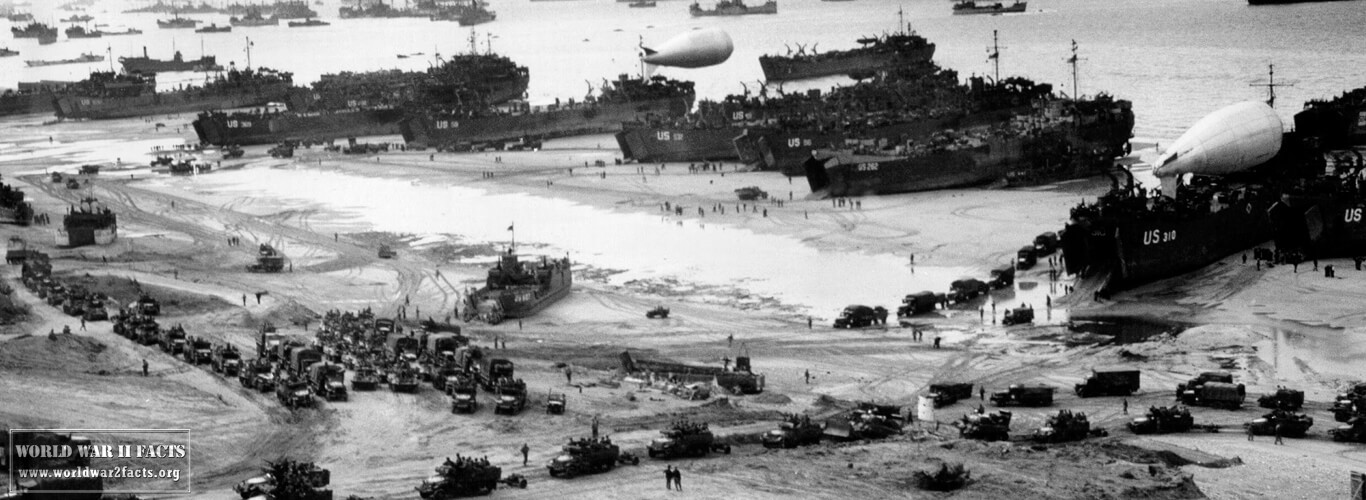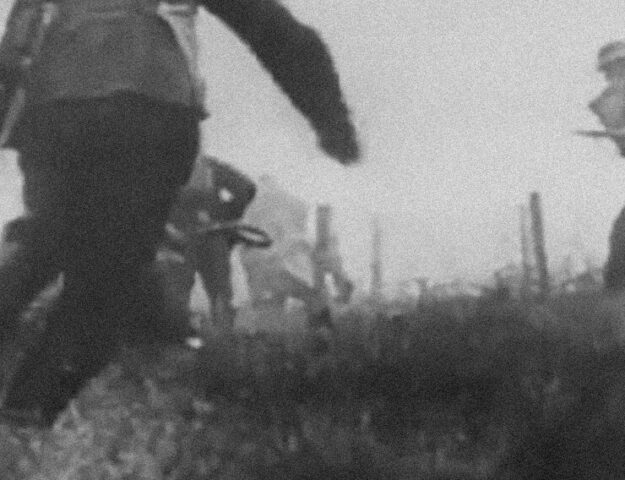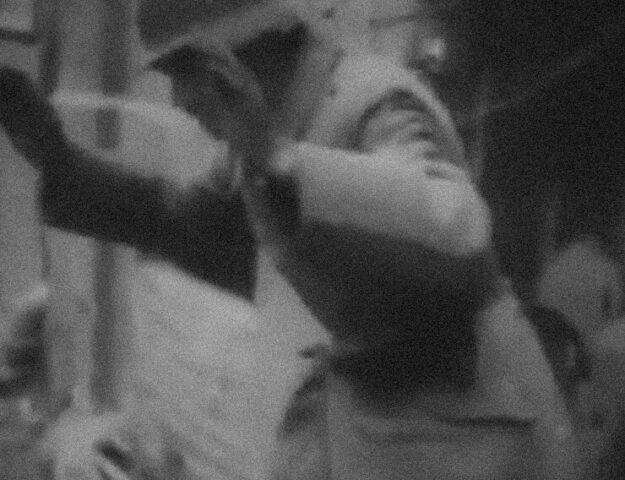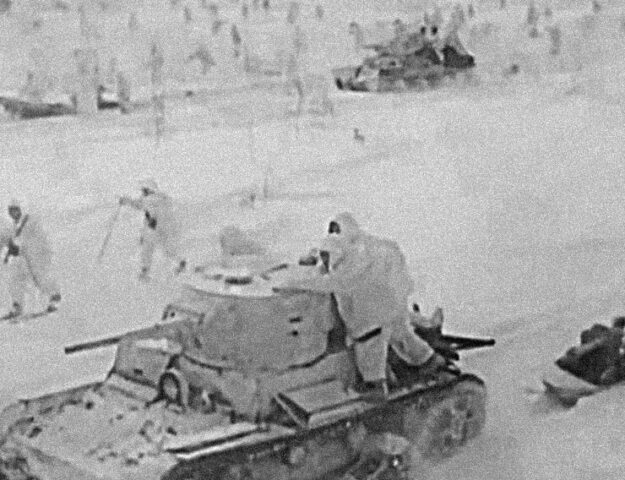Operation Overlord
 Into the Jaws of Death shows American troops, part of the U.S. 1st Infantry Division, leaving a Higgins Boat on Omaha.
Into the Jaws of Death shows American troops, part of the U.S. 1st Infantry Division, leaving a Higgins Boat on Omaha.Operation Overlord was an Allied landing in France scheduled for June in 1944. The operation had many commanders, but the overall commander was General Dwight Eisenhower. Operation Overlord is not only notable for the significance it would have in World War II but also use it was an operation that required the kind of logistics that were unprecedented before it.
The element of surprise was essential for the operation to succeed; keeping it top secret was a challenge; however, because of the many parties that participated in the landings, besides the Americans, there were also British troops and members of the French resistance present at operation Overlord.
Operation Overlord Commanders
Contents
The Normandy landings of World War II, codenamed Operation Overlord, was a telltale sign that the Allied forces were gaining momentum to liberate Europe from Nazi rule. With more than 156,000 troops on the ground, it was one of the largest military operations ever attempted. The commanders of this monumental task had spent months preparing and leading up to the invasion. Here’s a look at the men guiding the Allied and German forces during Operation Overlord.
Allied Forces Commanders
Leading the Allied forces during Operation Overlord was General Dwight D. Eisenhower. He had been appointed Supreme Commander of the Allied Expeditionary Force and was ultimately responsible for its success. In addition, Lieutenant-General Sir Miles Dempsey was in charge of the British Second Army along with Major-General Omar N. Bradley, who commanded the US First Army. The daunting task of coordinating separate commands fell on Admiral Bertram Ramsay, who was also charged with ensuring a successful naval campaign.
- Dwight Eisenhower (Supreme Allied Commander)
- Arthur Tedder (Deputy Supreme Allied Commander)
- Bernard Montgomery (Ground Forces Commander in Chief)
- Trafford Leigh-Mallory (Air Commander in Chief)
- Bertram Ramsay (Naval Commander in Chief)

German Forces Commanders
Controlling the German forces tasked with repelling the Allied invasion was Field Marshal Erwin Rommel. Known as “The Desert Fox”, he had earned a reputation as a formidable tactician and leader during his campaigns in North Africa. Rommel was joined by Generals Wilhelm Falley and Friedrich Dollmann, who commanded units stationed at Caen, Carentan, and Cherbourg, respectively. Ultimately, however, Hitler wielded the most influence over Germany’s tactics during Operation Overlord.
- Gerd von Rundstedt (Oberbefehlshaber West)
- Erwin Rommel (Heeresgruppe B)
Operation Overlord was a carefully planned operation that required both determination and skill from some of the greatest minds of their time. The commanders were keenly aware of the risks involved yet remained committed to their cause of liberating those suffering under Nazi rule. Their efforts ultimately paid off, and leaders such as Eisenhower, Rommel, and others will forever be remembered for their contributions to this historic event.
Operation Overlord Losses
- Allied Forces
- 226,386 casualties
- 4,101 planes
- ~4,000 tanks
- German Forces
- 209,875 – 450,000 casualties
- 2,127 planes
- ~2,200 tanks and assault guns
- French Civilians
- 13,632–19,890 French civilians killed or injured
Operation Overlord Map
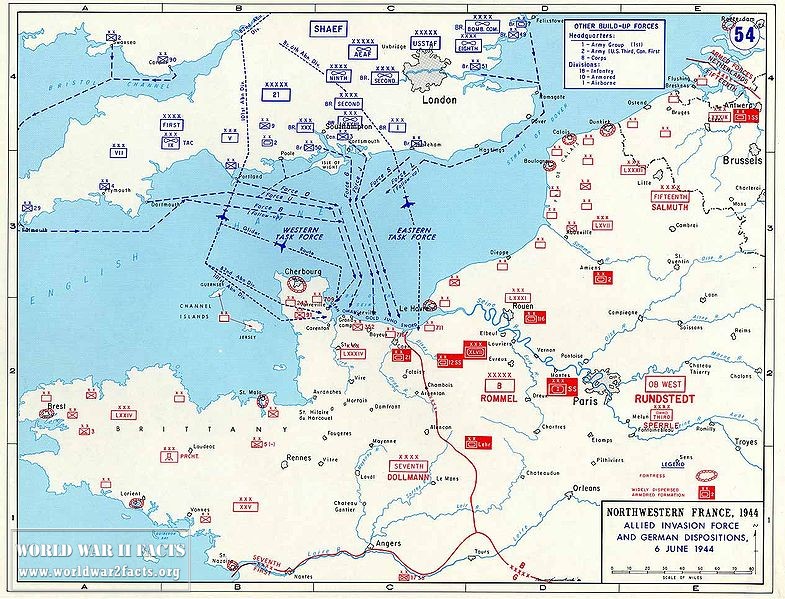
Operation Overlord Training and Preparation Video
Operation Overlord Summary
The decision to land on Normandy was risky, but the beaches weren’t very well suited for landing that much equipment and that many troops. One of the earlier attacks that predated Operation Overlord – was “COSSAC,” which stood for the Combined Anglo-American plan. The plan was to use airborne bridges to protect the landings, which was ultimately added to Operation Overlord was Montgomery. He wanted the five beaches of Normandy attacked by the land and sea forces while air forces served as support.
Eisenhower supported Montgomery’s plan as well, and Operation Overlord was more or less how Montgomery wanted it. The only difference was that Montgomery wanted to land five divisions while Eisenhower wanted to have a lot more men; he wanted to have at least 18 initial divisions with a contingency for more later on.
This operation was like no other in history because of the massive amount of equipment and troops involved, one of the most important parts of the operation was keeping it top secret because the main idea of the operation was to catch the Germans off guard, but if the Germans got wind of Operation Overlord, it could turn out disastrous. The Allies presented Pays de Calais as the main target, so Germans didn’t expect a full-out attack on Normandy.
The operation required so much equipment and logistics that it was a nightmare, with over 100,000 troops, and more than 13,000 vehicles. The operation even included a man-made harbor that would make it easier to land troops and equipment. Overlord ultimately had around 3,000,000 men in 47 divisions that were transported with 6000 ships and were protected by over 5000 fighter planes.
Invasion of Normandy Video
Operation Overlord Conclusions
The success of Operation Overlord shouldn’t come as a surprise to anyone familiar with how much military planning was done.
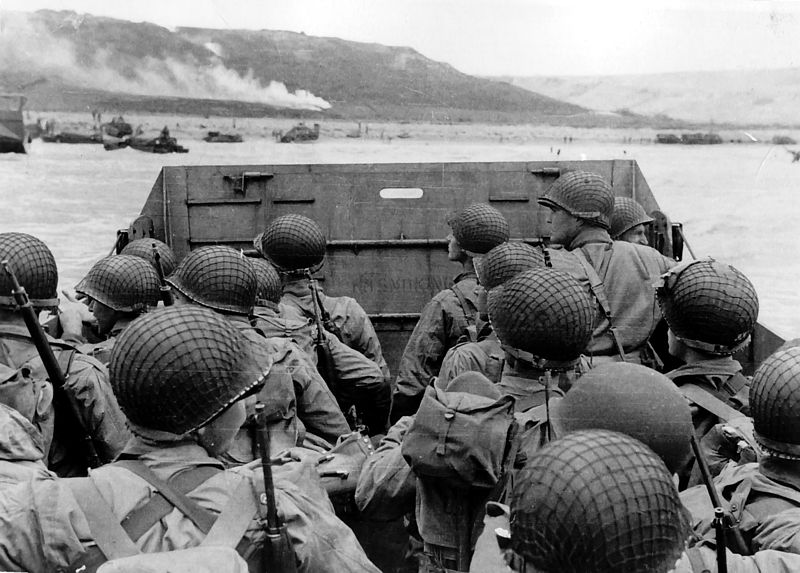
This operation was planned out so well that it would have been surprising if it failed, especially if one considers the state of the German military at the time. The training of the Allied troops was a testament to how well-prepared the operation was. The troops were trained with live ammunition on terrain that closely resembled the place of invasion. They were trained to operate properly in teams and use teamwork to their advantage, even removing obstacles like enemy gun placement and trenches. Special units were trained to take out targets such as close-range artillery.
Napoleon famously said, “an army marches on its stomach” in modern times, supplies are the equivalent of what food was in Napoleon’s time. For the supplies, during Operation Overlord, two artificial harbors were created. They were the primary location for unloading the supplies from ships to the shore until the port was available. Unfortunately, a violent storm destroyed one of the harbors. It severely damaged the other, so it was decided to unload the supplies directly on the beach, which proved much more efficient than anybody thought.
Even though Operation Overlord was the first part of what would go down in history as The Invasion of Normandy or the Battle of Normandy, as many people don’t know its name. It is significant because it would be the first part of an operation to turn the tide in the war against Germany for good. Most people remember the day that contributed to the ending of the way, D-Day, which was the first day of the Invasion of Normandy.
Operation Overlord References
- BBC Operation Overlord Tutorial, last accessed April 10th, 2013.
- Booknotes interview with Stephen Ambrose on D-Day: June 6, 1944, last accessed on April 10th, 2013.
- Leighton, Richard M. (2000 (reissue from 1960)). “Chapter 10: Overlord Versus the Mediterranean at the Cairo-Tehran Conferences”. In Greenfield, Kent Roberts. Command Decisions. United States Army Center of Military History. CMH Pub 70-7.
- Guide to materials on the planning of Operation Overlord at the Dwight D. Eisenhower Presidential Library, last accessed April 10th, 2013.
- U.S. Army’s official interactive D-Day website, last accessed 10 April 2013.
